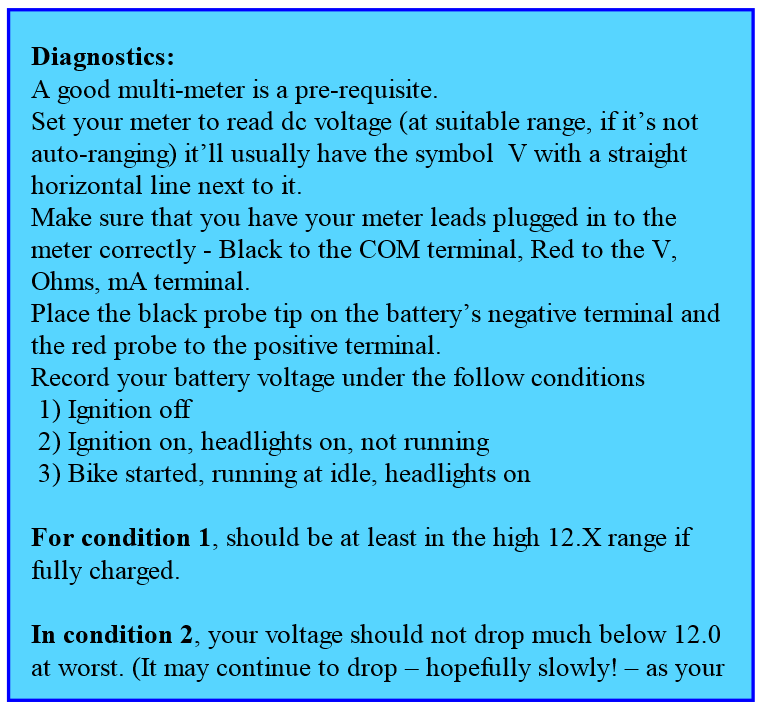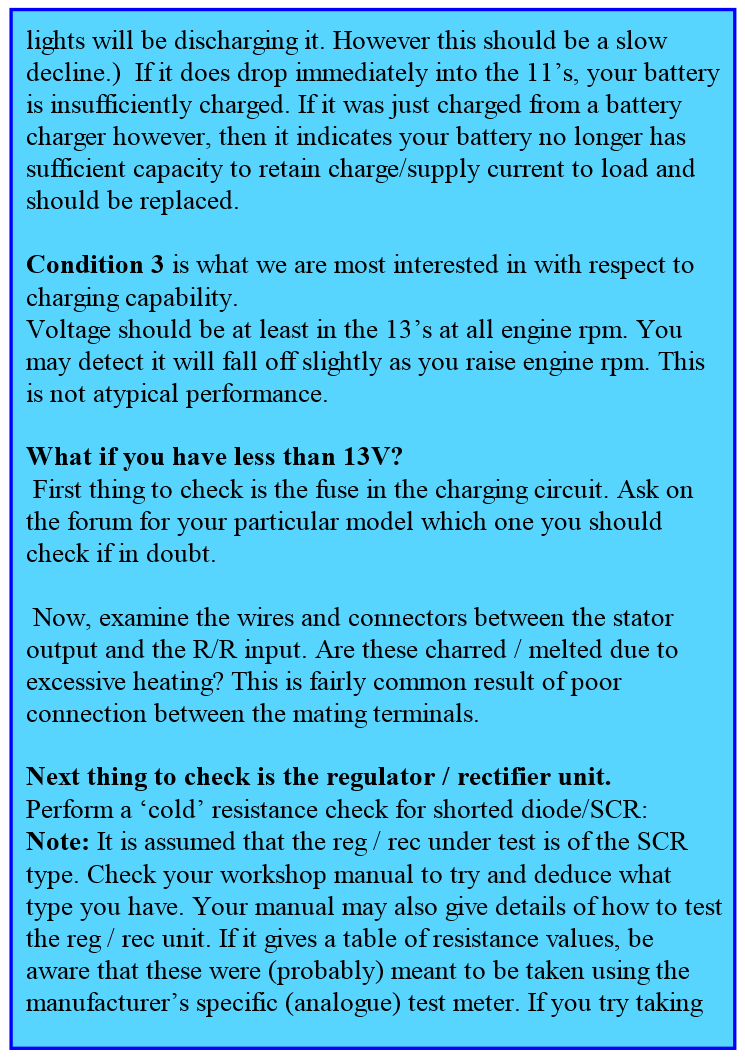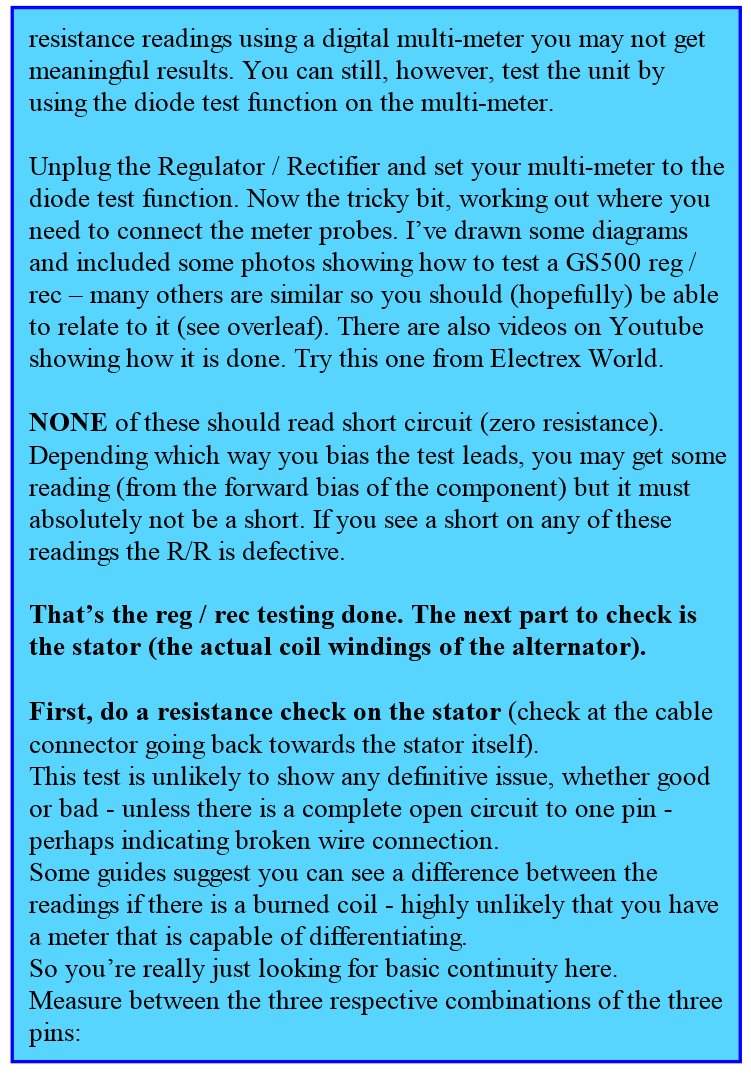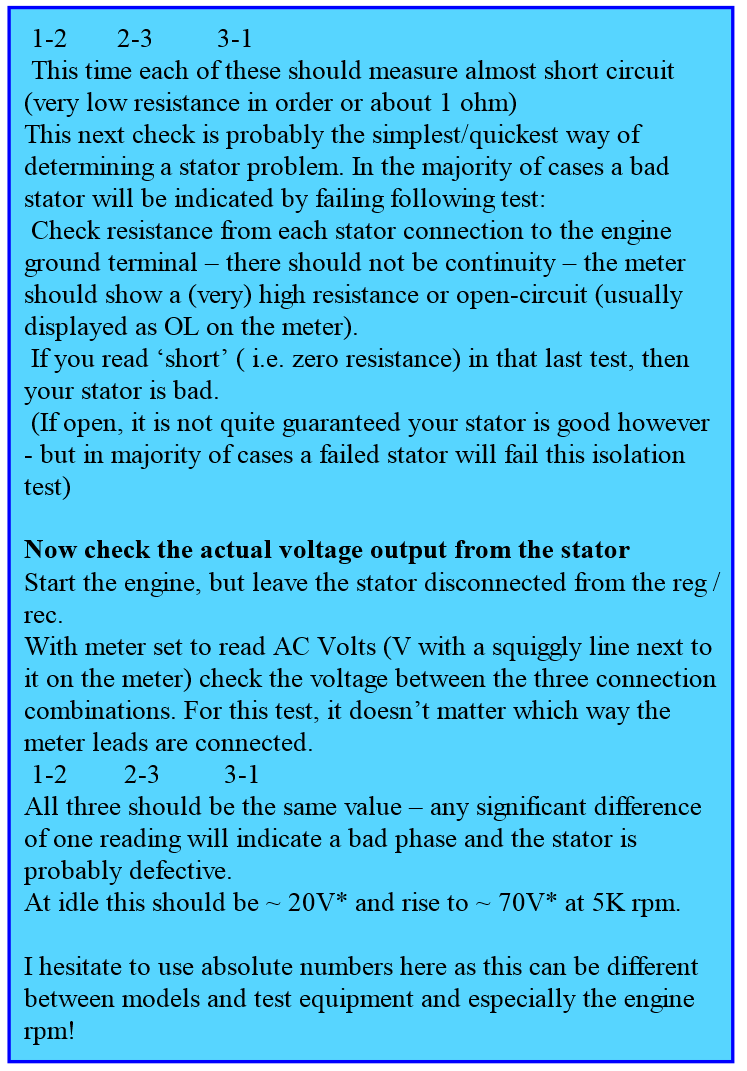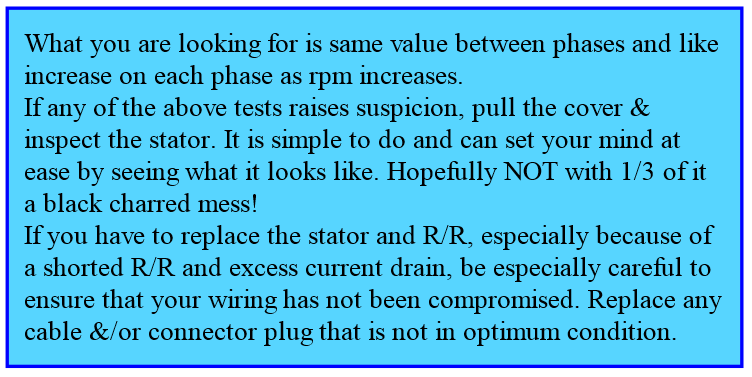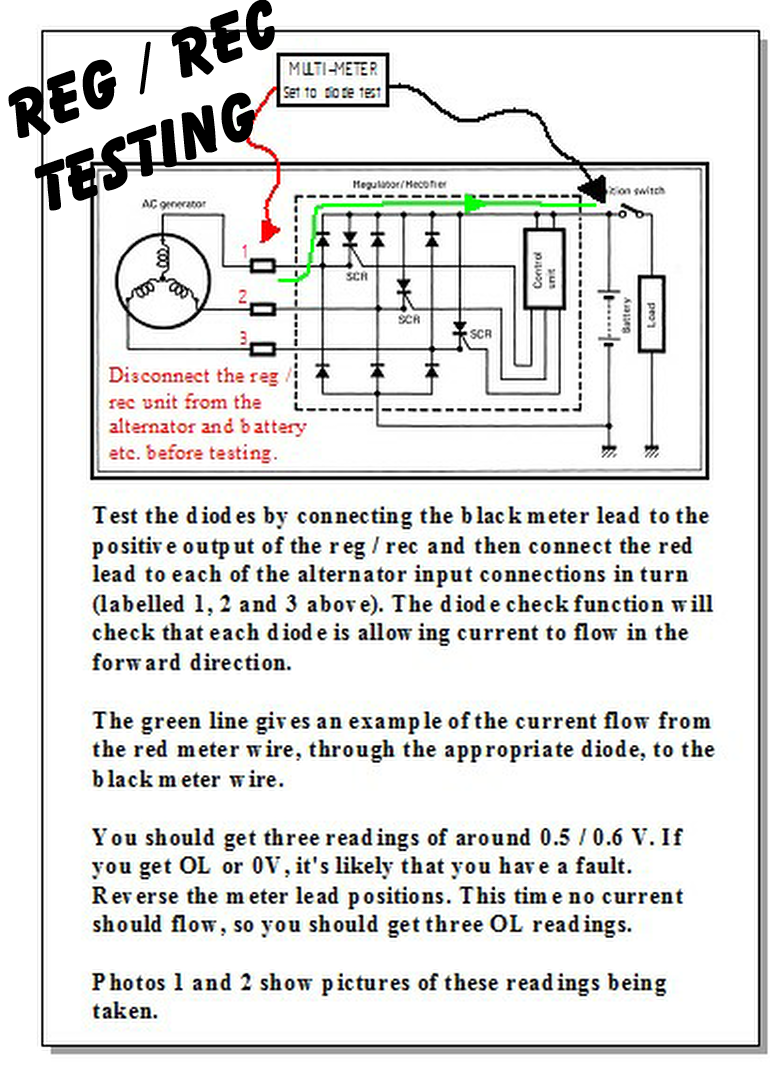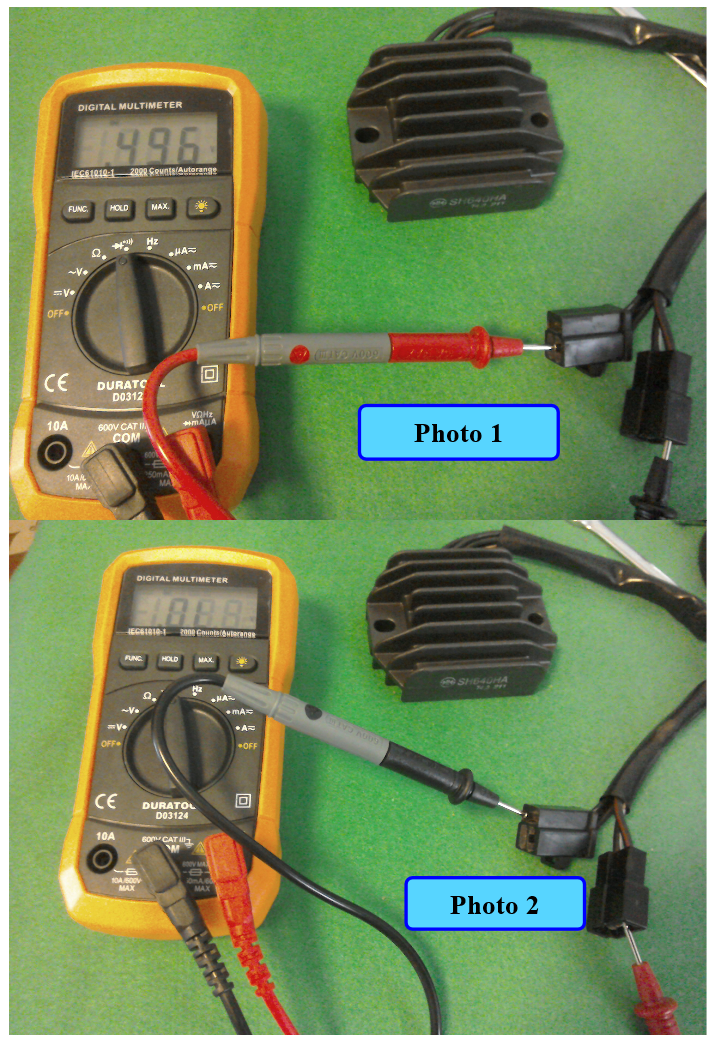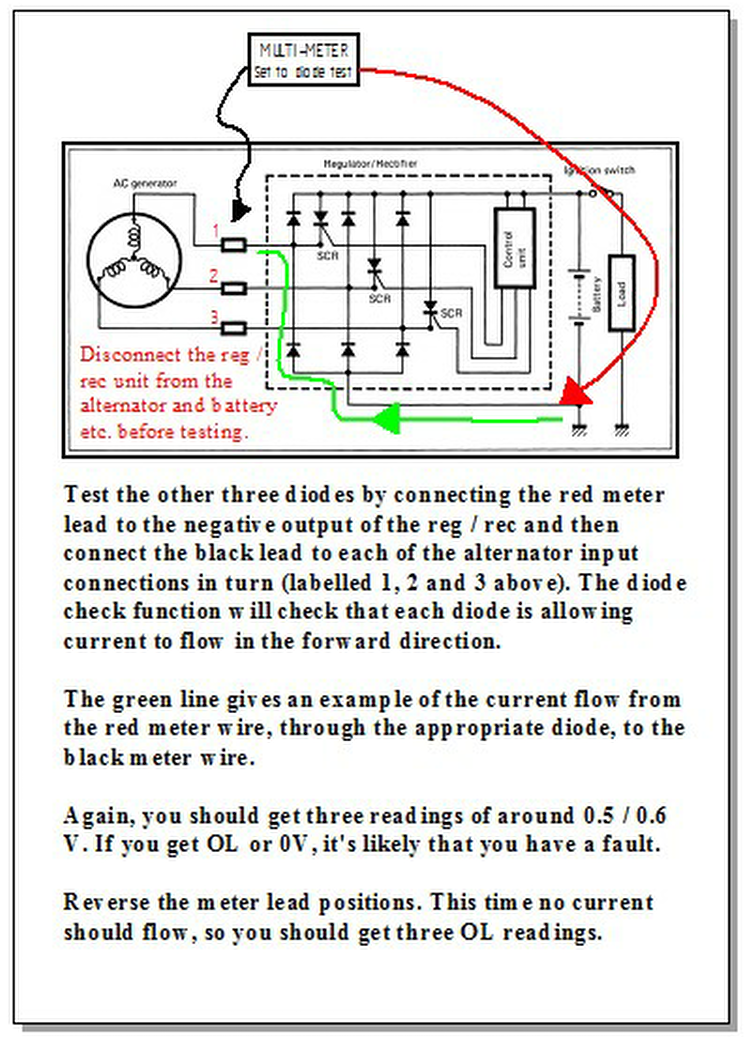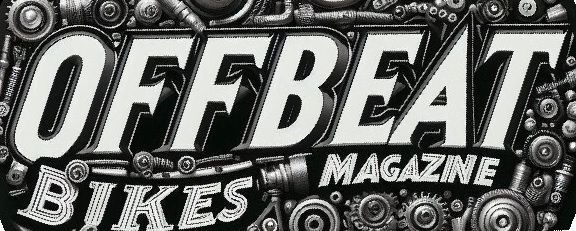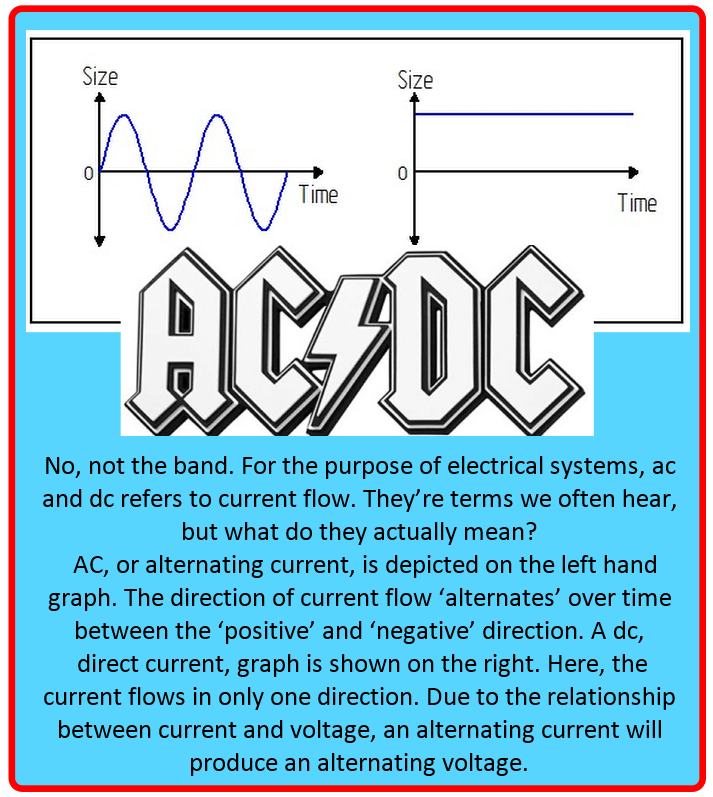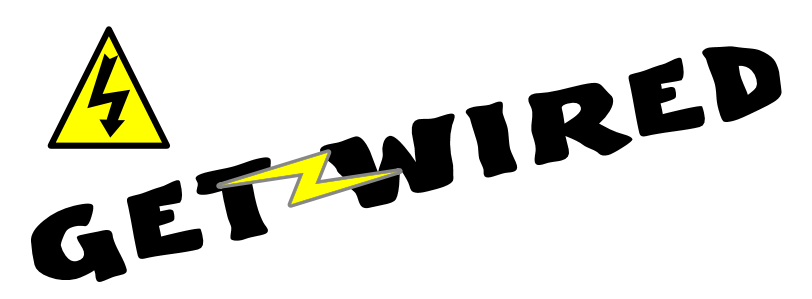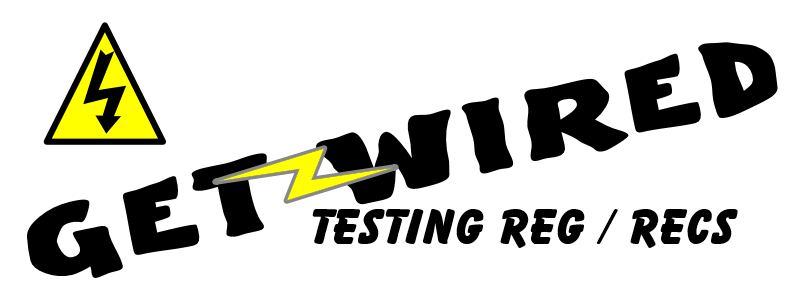
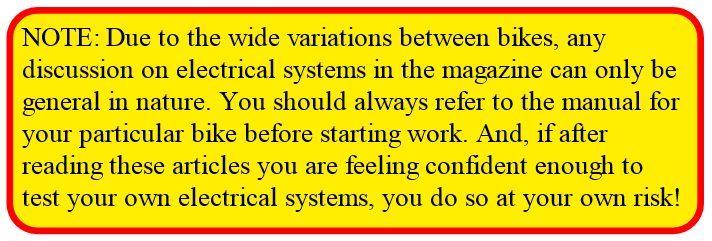
We continue our look at using multi-meters to help test bike electrical equipment. This time, we look at regulators and rectifiers. Specifically, what are they, how do they work, and how can we test them?
The regulator / rectifier is an important part of the charging circuit. It broad terms, it takes the ac output from the alternator and converts it into dc voltage suitable for charging the battery. Some early bikes have separate rectifiers and regulators, most (since the mid 80s) have a combined rectifier and regulator unit.


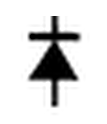
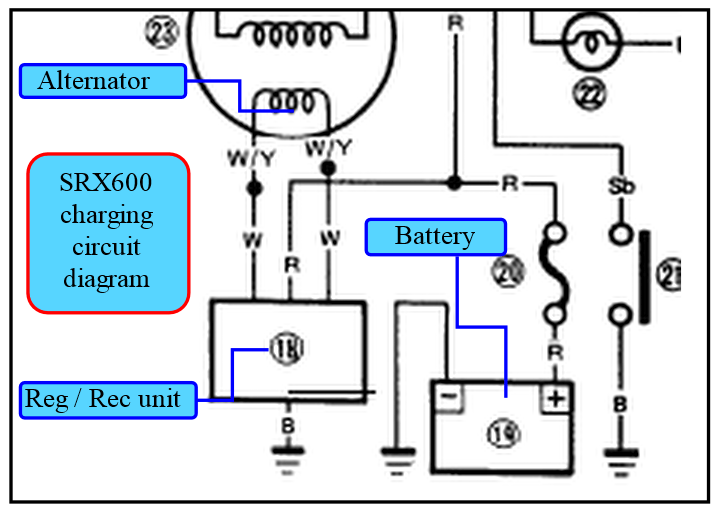
Yamaha are not so forthcoming with what’s in their reg / rec, and the diagram is not so easy to understand.
The Yamaha diagram has been included as an example of a single phase system. There is only one coil in the alternator feeding an ac voltage into the regulator / rectifier unit.
They don’t show any internal diagram for the reg / rec, but it’s likely to be something like that shown on the below. This is from the Shindengen website, and the standard SRX regulator is a Shindengen one.

If you follow this link HERE to the Shindegen website, they give a good overview of the different types of regulator / rectifier commonly used on motorcycles.
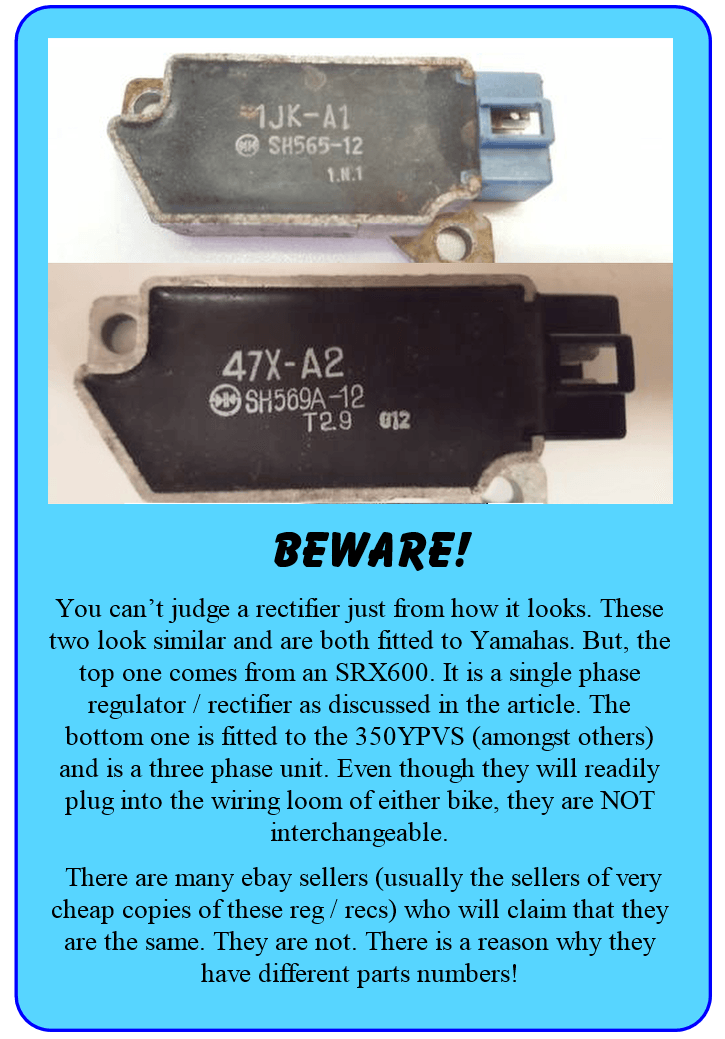
Enough of talking about what regulator/ rectifiers do, and how they do it. More important is how you can check if your own charging system is working. The following is an extract from a forum post on www.triumphrat.net. Apparently the reg / rec units on some of the Trumpets weren’t too great, and this thread deals with fitting more reliable replacements. It also has some good general information on diagnosing charging system issues. So, I’ve used some of it here and added some extra detail where I thought it might be useful. But, I do encourage you to read the full post, which can be found HERE.
